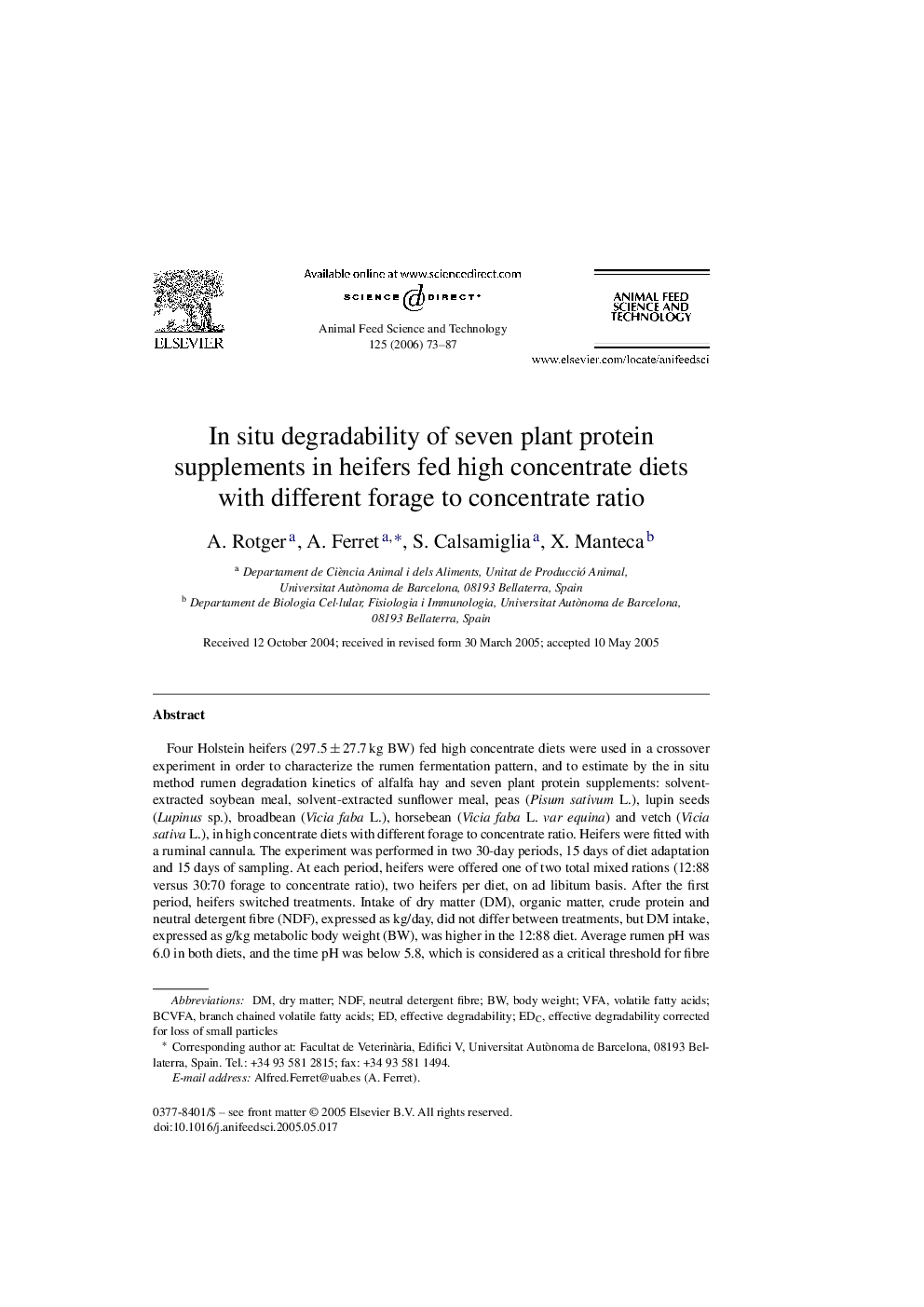| کد مقاله | کد نشریه | سال انتشار | مقاله انگلیسی | نسخه تمام متن |
|---|---|---|---|---|
| 2421294 | 1552505 | 2006 | 15 صفحه PDF | دانلود رایگان |

Four Holstein heifers (297.5 ± 27.7 kg BW) fed high concentrate diets were used in a crossover experiment in order to characterize the rumen fermentation pattern, and to estimate by the in situ method rumen degradation kinetics of alfalfa hay and seven plant protein supplements: solvent-extracted soybean meal, solvent-extracted sunflower meal, peas (Pisum sativum L.), lupin seeds (Lupinus sp.), broadbean (Vicia faba L.), horsebean (Vicia faba L. var equina) and vetch (Vicia sativa L.), in high concentrate diets with different forage to concentrate ratio. Heifers were fitted with a ruminal cannula. The experiment was performed in two 30-day periods, 15 days of diet adaptation and 15 days of sampling. At each period, heifers were offered one of two total mixed rations (12:88 versus 30:70 forage to concentrate ratio), two heifers per diet, on ad libitum basis. After the first period, heifers switched treatments. Intake of dry matter (DM), organic matter, crude protein and neutral detergent fibre (NDF), expressed as kg/day, did not differ between treatments, but DM intake, expressed as g/kg metabolic body weight (BW), was higher in the 12:88 diet. Average rumen pH was 6.0 in both diets, and the time pH was below 5.8, which is considered as a critical threshold for fibre degradation, was the same for both treatments (10.4 ± 1.6 h). Average ammonia nitrogen and volatile fatty acid (VFA) concentrations did not differ between treatments and individual VFA proportions were typical of high concentrate diets. Average effective degradability of DM (0.62 ± 0.02) and NDF (0.25 ± 0.03) of alfalfa hay were low and no differences were detected between treatments. The same extent of NDF degradation, together with the same proportions of VFA would indicate that both diets had the same fibrolytic activity. Forage to concentrate ratio did not affect rumen nitrogen degradability of any protein supplements incubated in situ. Corrected effective degradability for small particle losses of sunflower meal (0.78) was higher than legume seeds, which were not statistically different between each other and ranged from 0.63 to 0.66. Soybean meal had the lowest degradability value (0.61). These nitrogen degradation values must be considered more valid for beef cattle formulation of high concentrate diets than data obtained with forage diets.
Journal: Animal Feed Science and Technology - Volume 125, Issues 1–2, 6 January 2006, Pages 73–87